Jean-Michel Basquiat: King Pleasure – Starrett-Lehigh Building, New York
A review of Jean-Michel Basquiat: King Pleasure, on at the Starrett-Lehigh Building in New York’s Chelsea art district. A very enjoyable exhibition with a unique point of view: just a shame about the price tag.
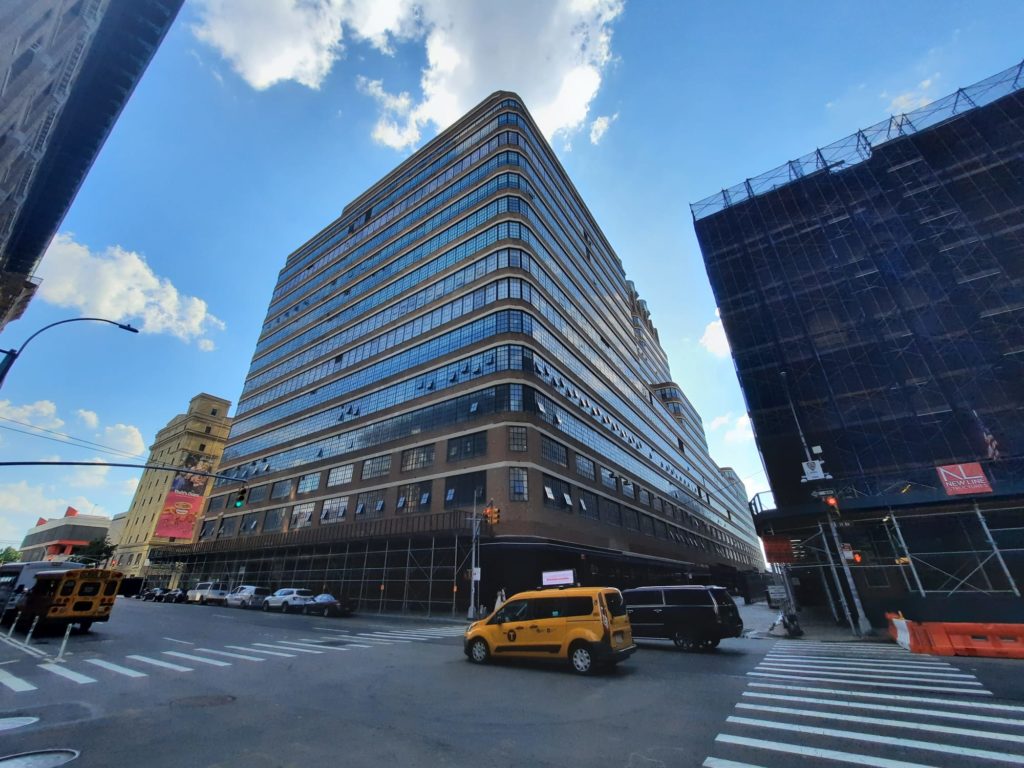
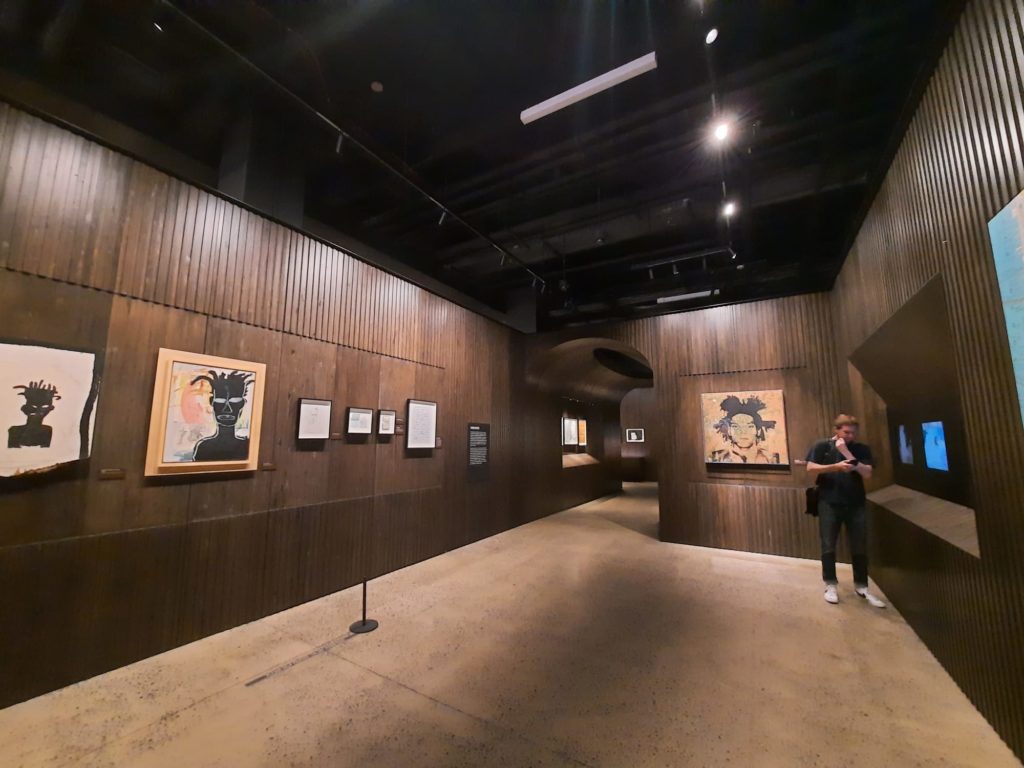

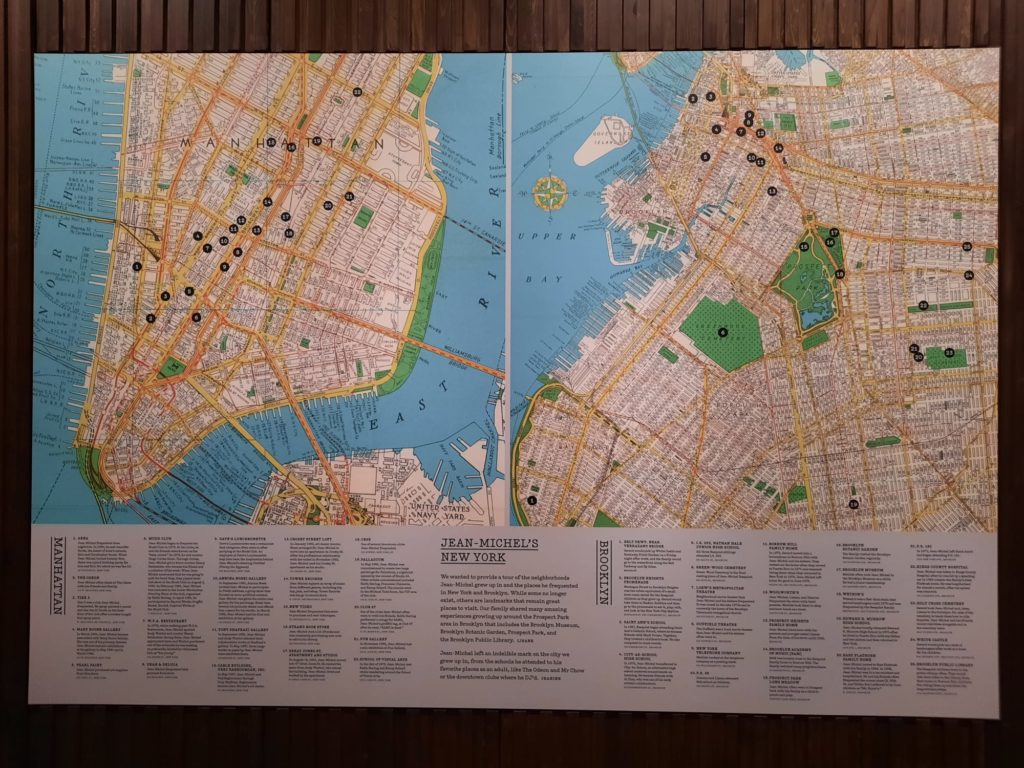
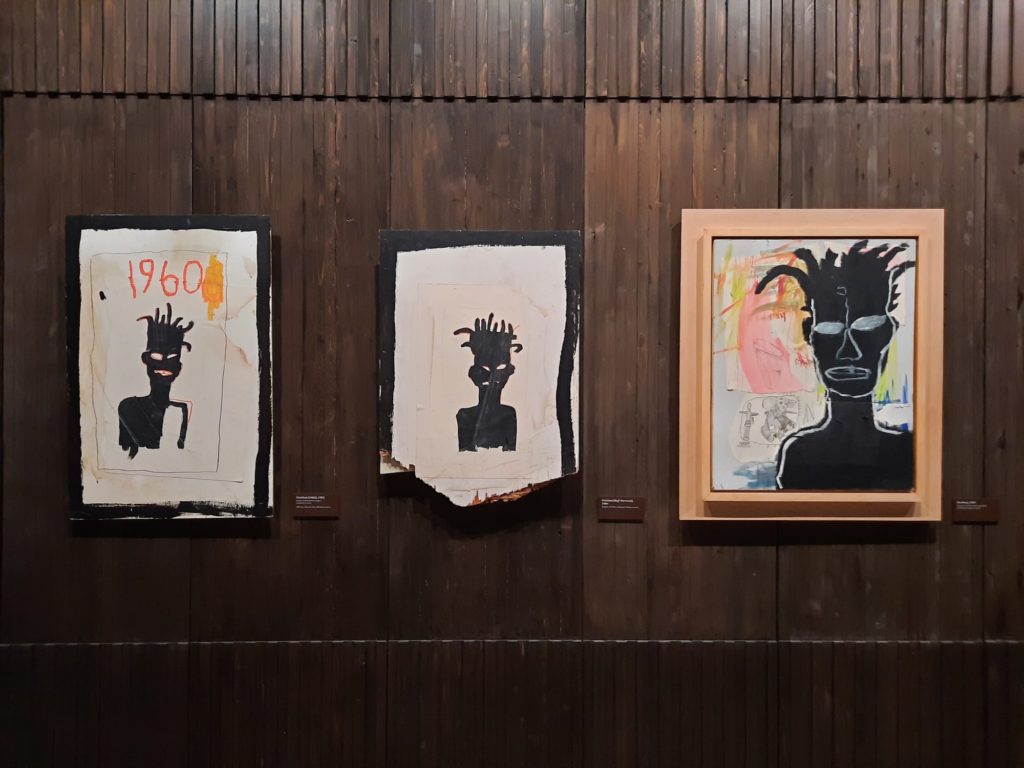
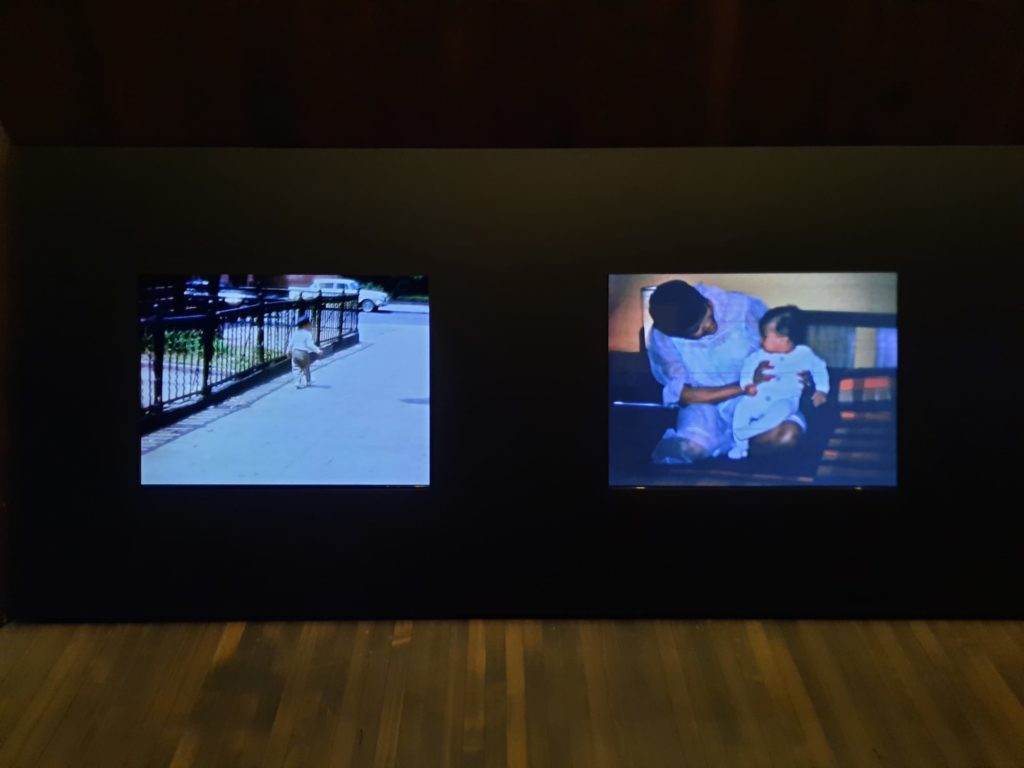
A Major Basquiat Exhibition? Sign Me Up!
My recent trip to Chicago and New York was a little delayed because… well… I finally got Covid. All those months and years of being careful and it finally caught up with me! Once I had rescheduled dates, I was pleased to see that the one exhibition I really 100% wanted to see would still be open. And with a couple of evening options I could fit in around daytime commitments, it seemed like it was meant to be.
I’m a long-time Basquiat fan. I love the aesthetic of his work. I love the complex layers of meaning. And I have such an admiration for artists whose creativity just pour out of them. In Basquiat’s case, including onto the furniture and appliances. I’ve been to exhibitions of his work before, including at the Fondation Louis Vuitton in Paris. And I’ve even been to plays about him.
This, however, is not your typical Basquiat exhibition. For starters, it’s not in a museum. It’s also curated by his sisters and step mother, and thus comes with a very firm point of view. I was interested to see what bearing both of these factors had on my experience as a visitor. Join me now as we dig into that in a little more detail.
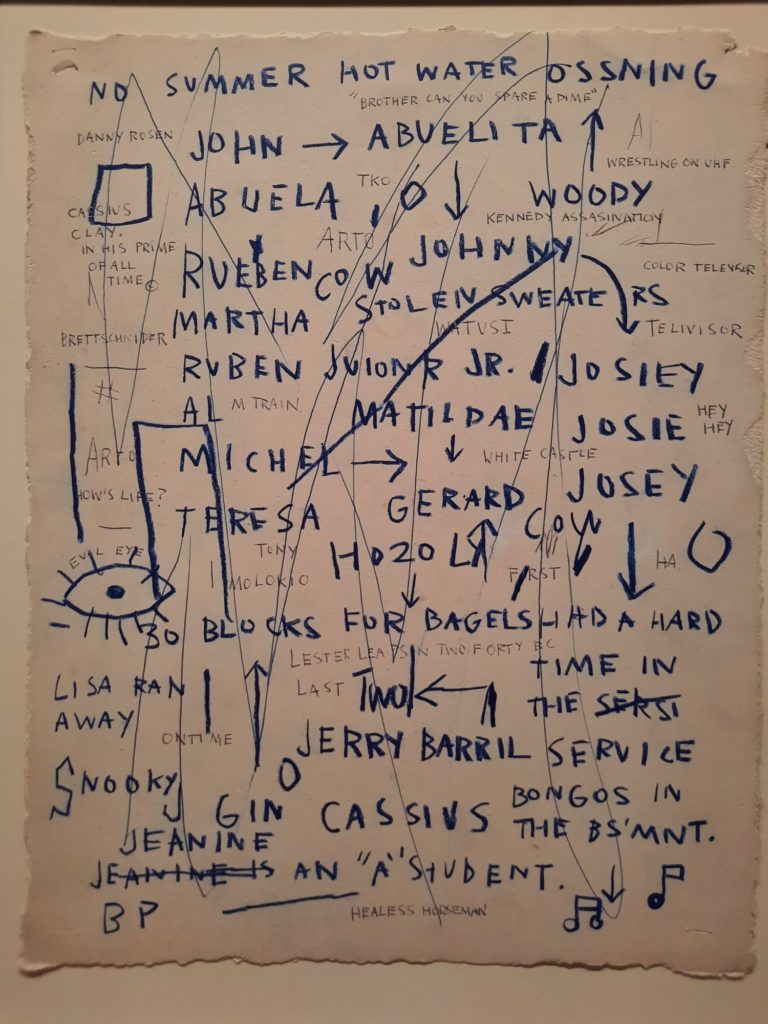
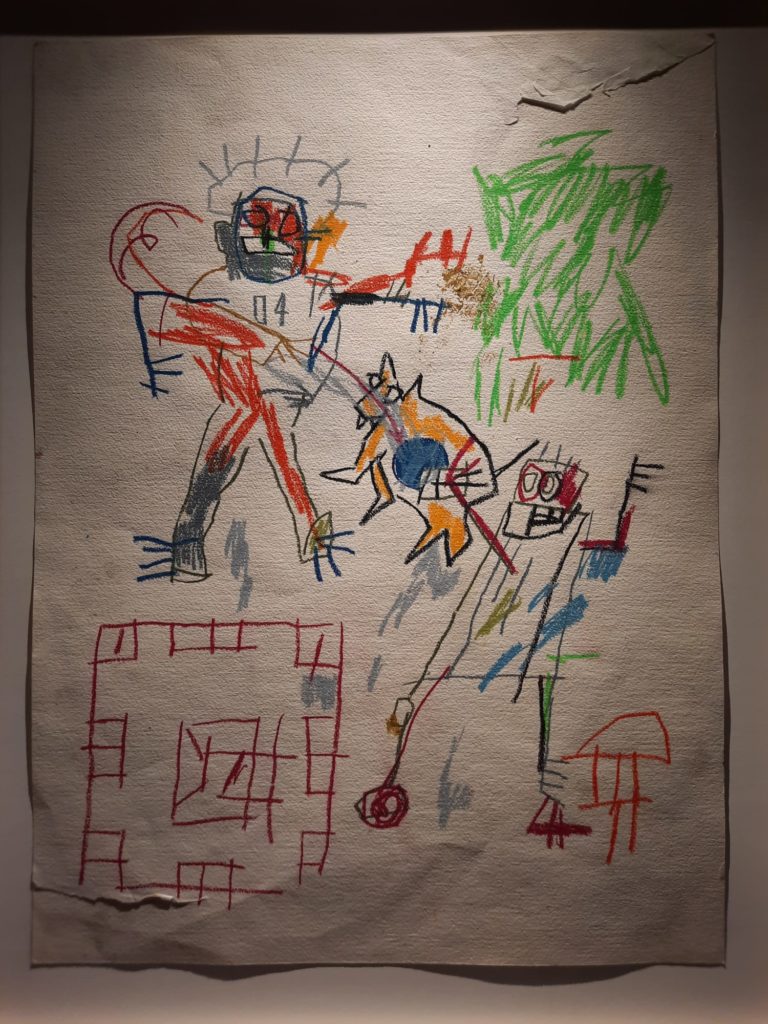

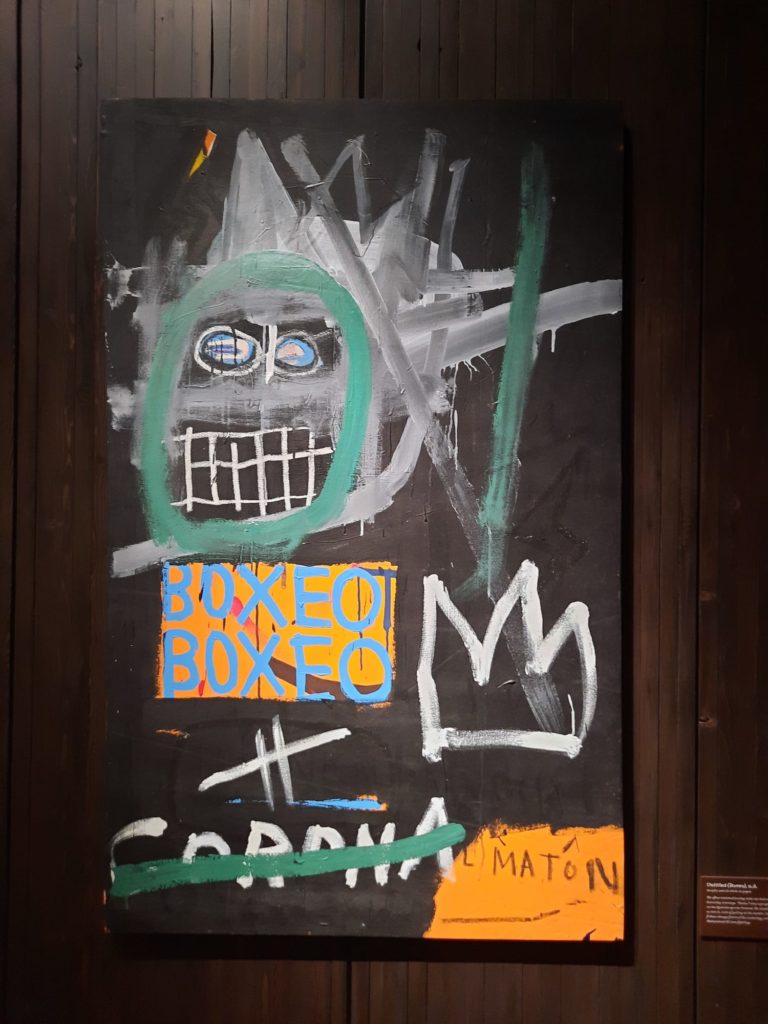
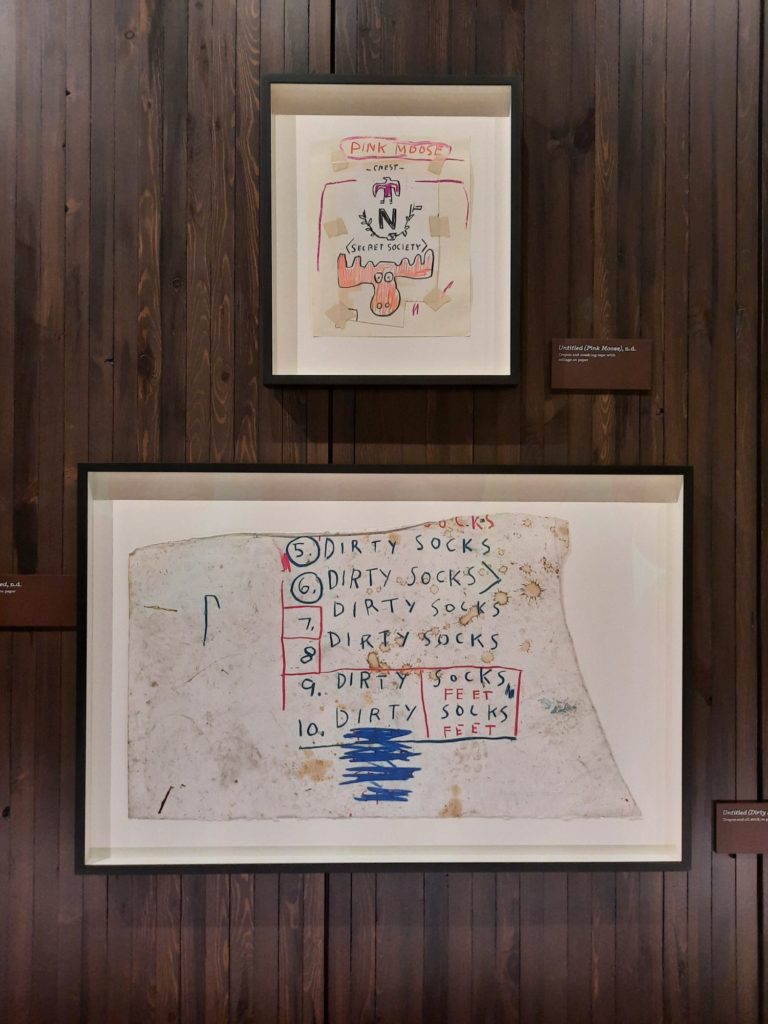
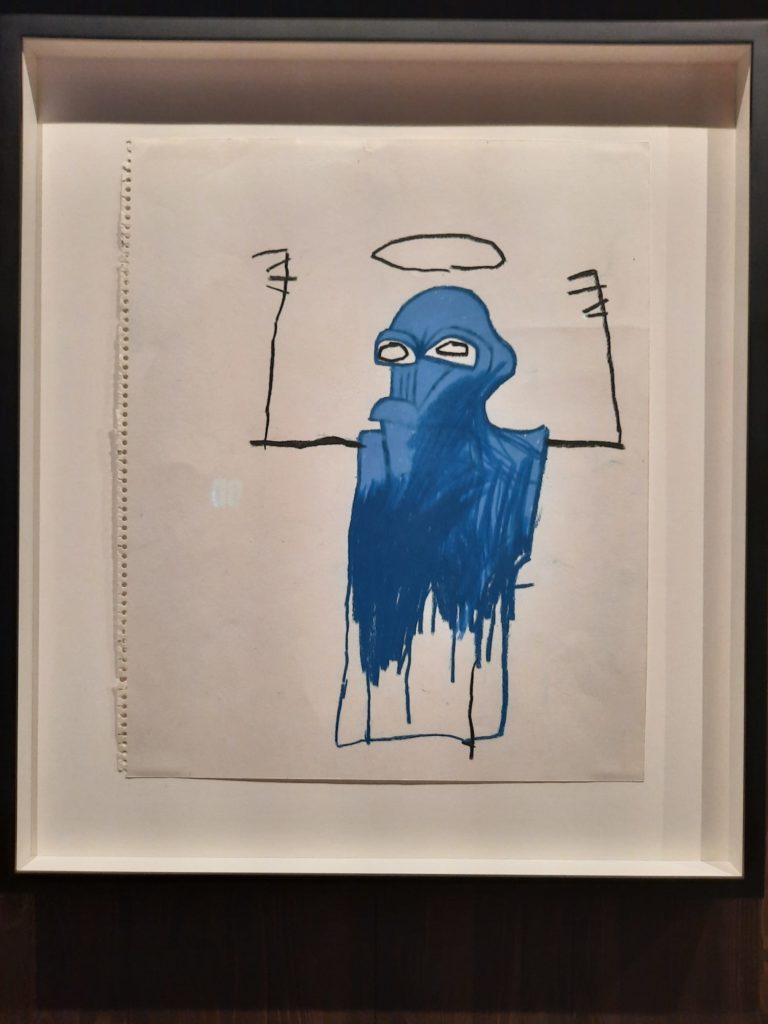
A Family Affair
Jean-Michel Basquiat was born to a Haitian father and Puerto Rican mother in Brooklyn in 1960. Despite some troubles (his parents split when he was young and his mother experienced poor mental health), the family were middle class. Young Jean-Michel played with his younger sisters Lisane and Jeanine, had a Junior Membership to the Brooklyn Museum, and started to develop his own love of art. He illustrated his high school magazine, and wanted to be world famous. When he died at only 27, his star still on the rise, he left a big hole in his family.
He also left an important artistic legacy, and an estate that included hundreds of works. His father Gerard controlled the estate for many years. His aim seems to have been to keep the estate intact, and therefore to promote his son’s work in ways other than selling artworks (eg. image licensing). Jeanine and Lisane have now taken over, and with a new generation come new ideas. This exhibition, curated together with their stepmother Nora Fitzpatrick, is one of them.
So Jean-Michel Basquiat is very much about Jean-Michel as a member of the Basquiat family. The deeply personal references in his work. The influence of his Brooklyn childhood on his art. Additionally, something that comes across in the interviews and text panels throughout the exhibition is a sense of wanting to right a wrong in the way the family management of the estate has been perceived. Lisane and Jeanine seem to believe their father’s efforts were misunderstood. I don’t know the details, but a big blockbuster exhibition is a pretty good way to set out your stall and set the record straight.

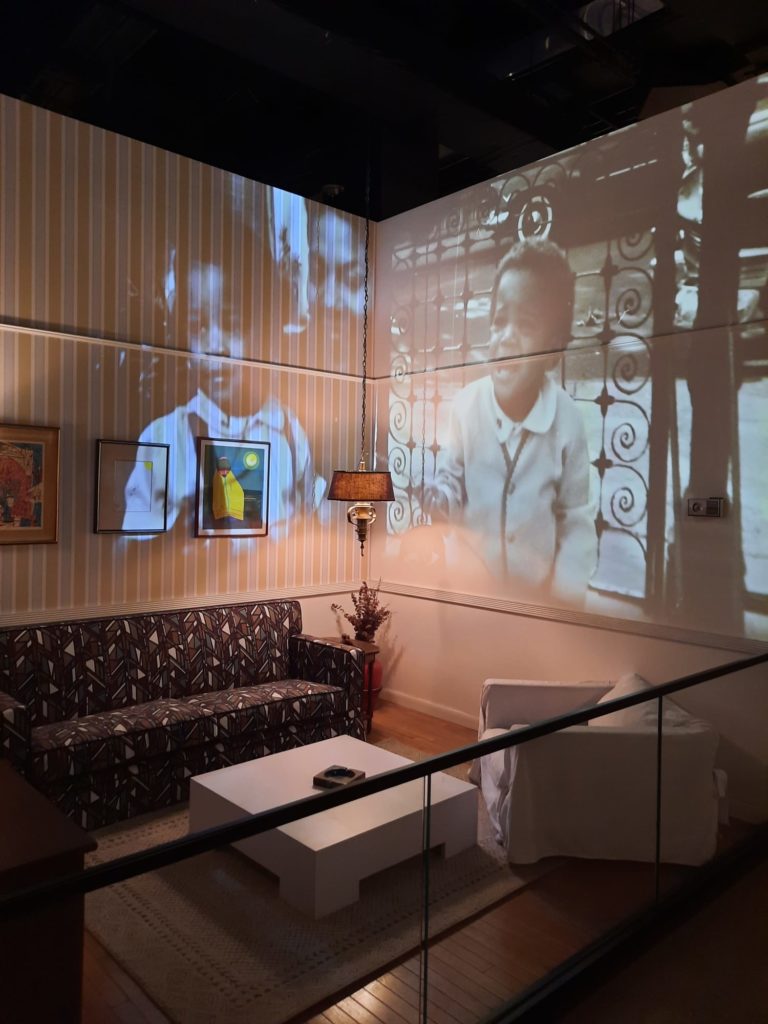
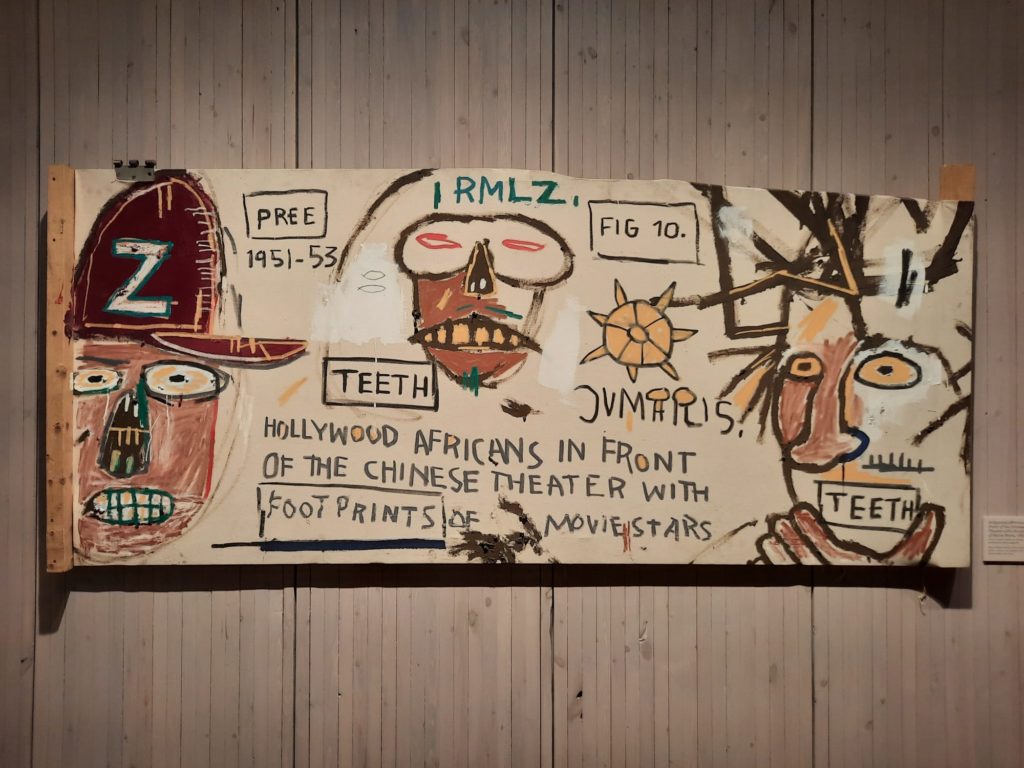
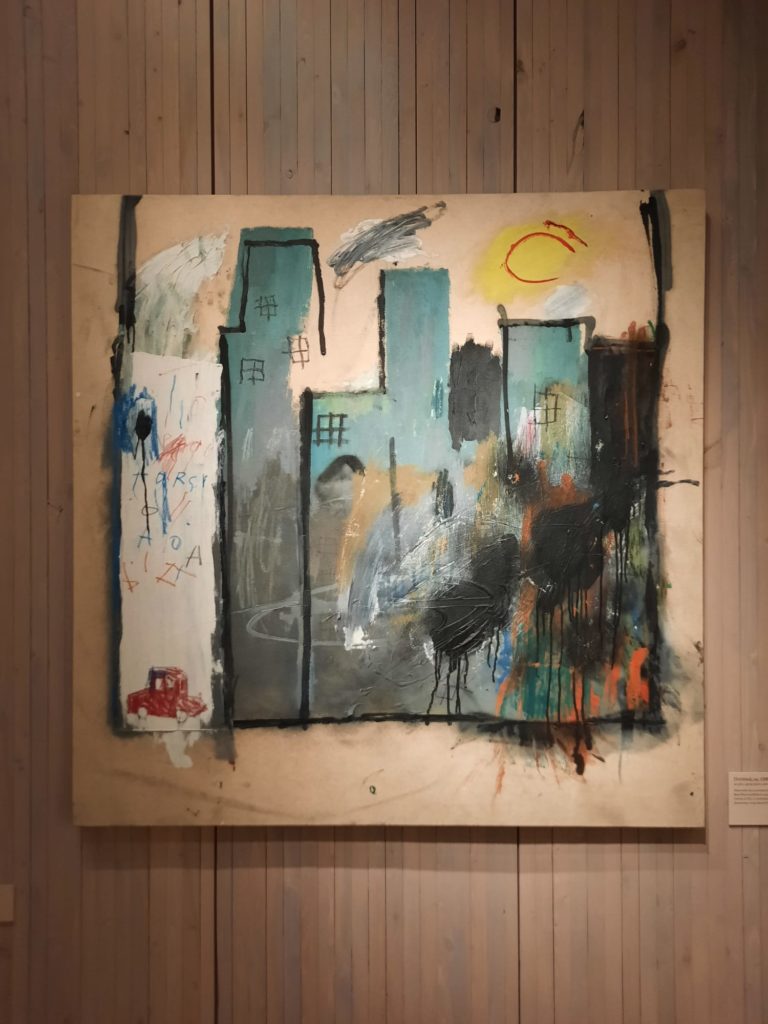
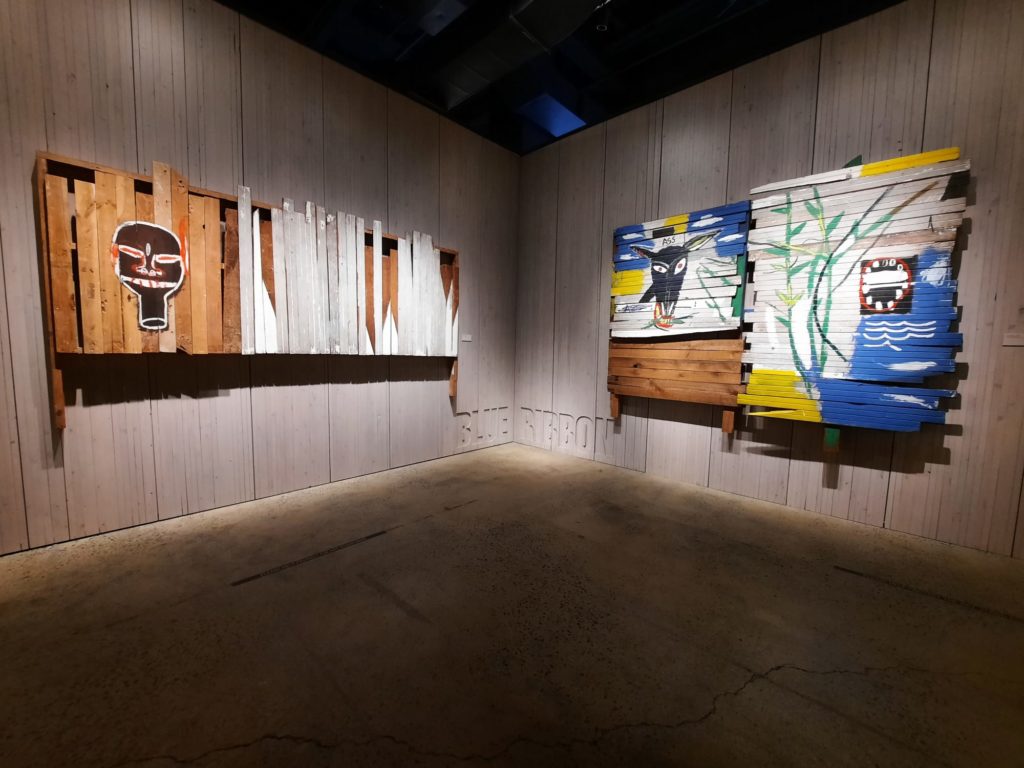
Jean-Michel Basquiat: King Pleasure
So the exhibition is curated with this family narrative in mind. The first room sets the scene. There’s a very interesting New York map with points of interest for Jean-Michel and his family. Old home movies. Family ephemera. And an explanation of how some of the names and words in his works, seemingly random, are actually autobiographical. I found it very effective. Basquiat has always seemed to be a product of an art scene and of New York in a wider sense, but the exhibition brings it back to very concrete places and people right from the outset.
As you move through the exhibition, it alternates between displays of artworks, and recreations of key spaces. There are three of these: the Basquiat family home, Jean-Michel’s studio, and the Michael Todd Room at the Palladium nightclub. Unlike a lot of exhibitions at the moment these feel like more than Instagram moments. They are serious efforts to place us in times and spaces important to Basquiat’s life and career. Plus, in the case of the latter, you need a space of a certain scale and grandeur to display mega-format works like Nu-Nile.
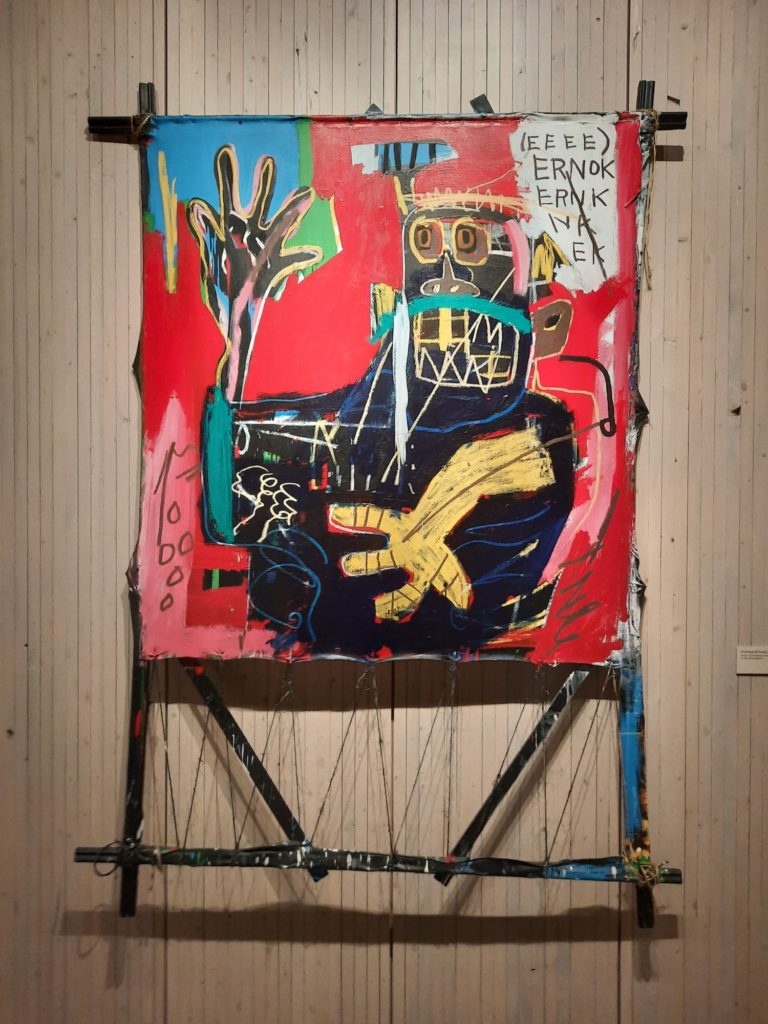
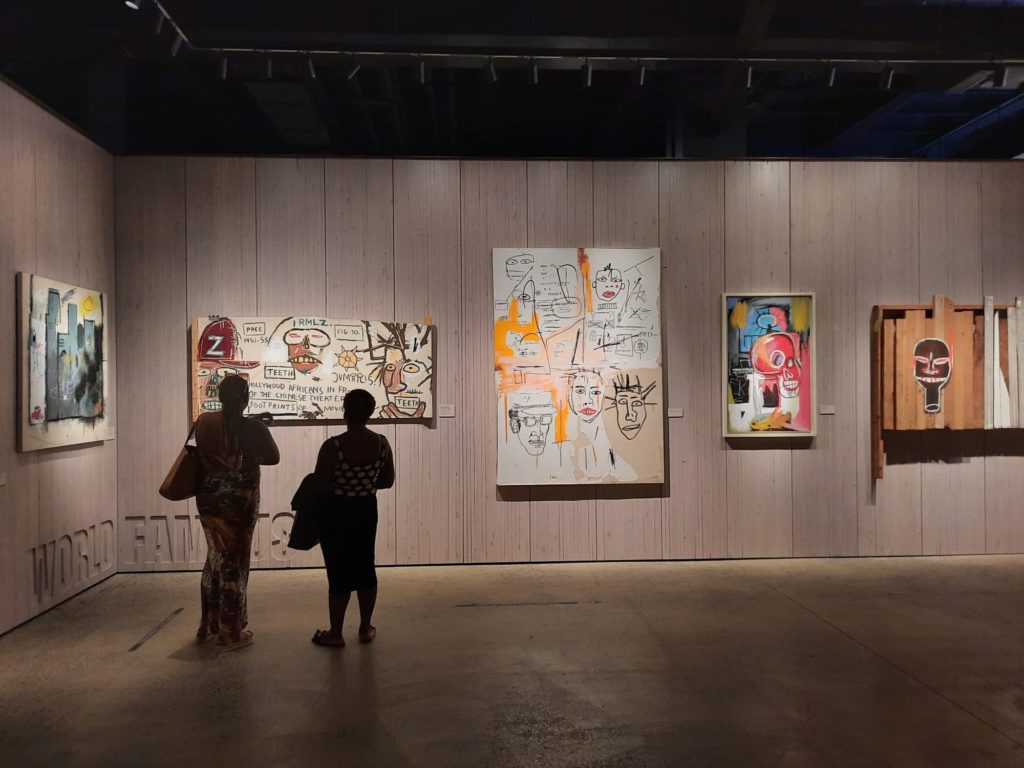
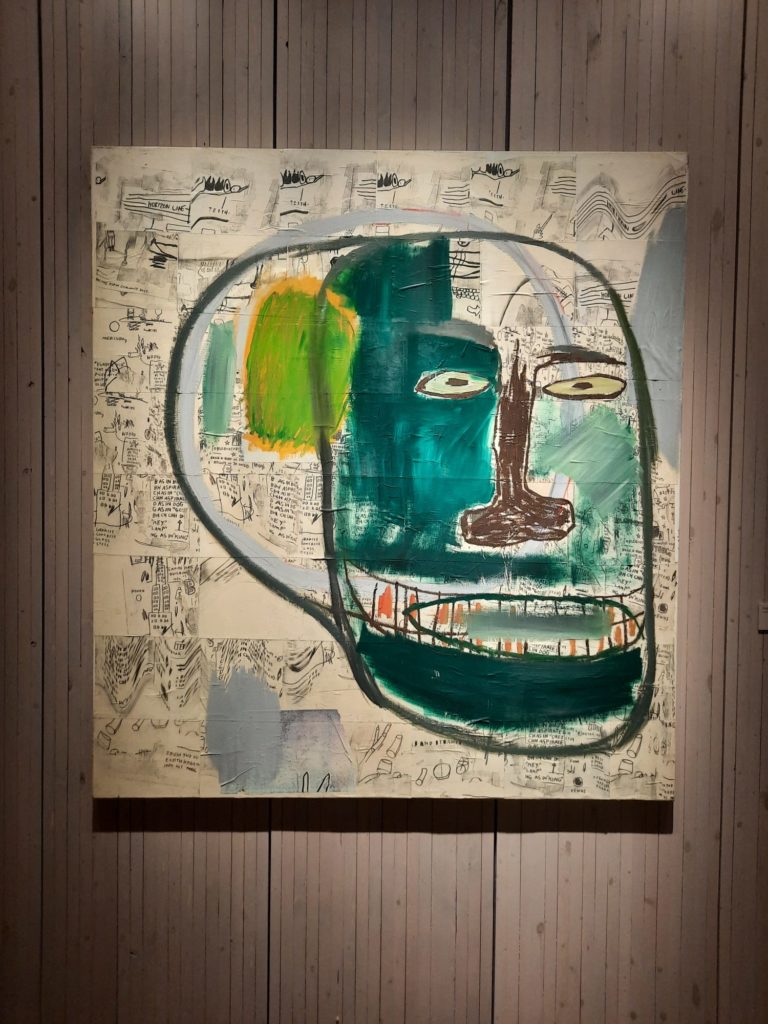
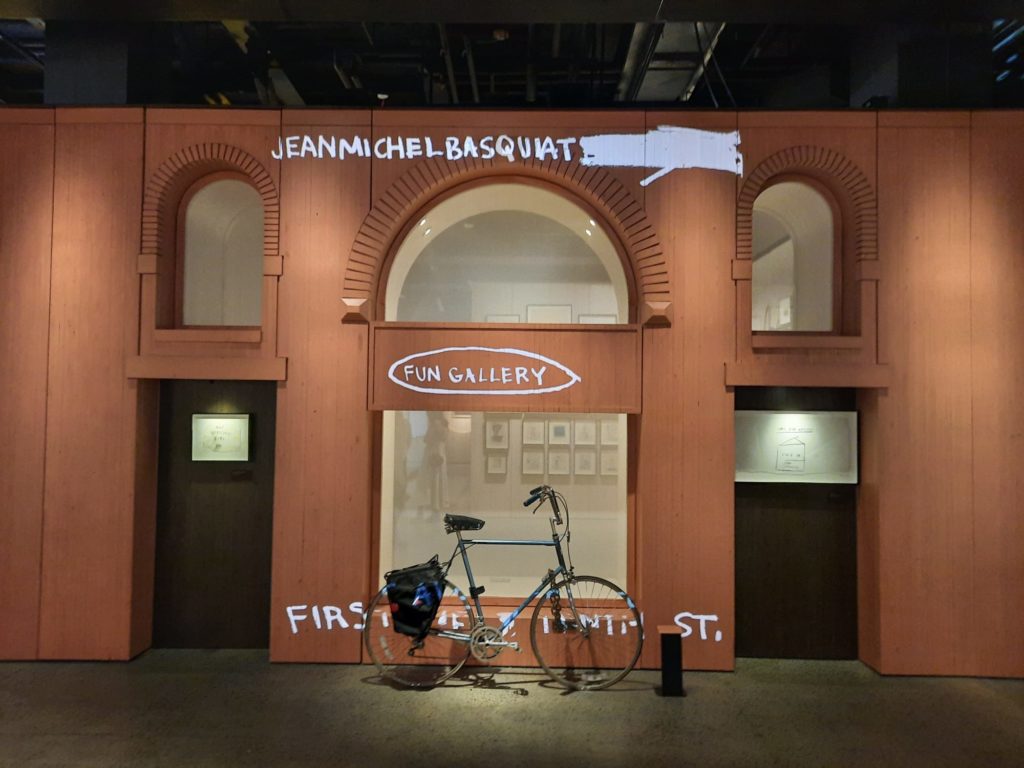
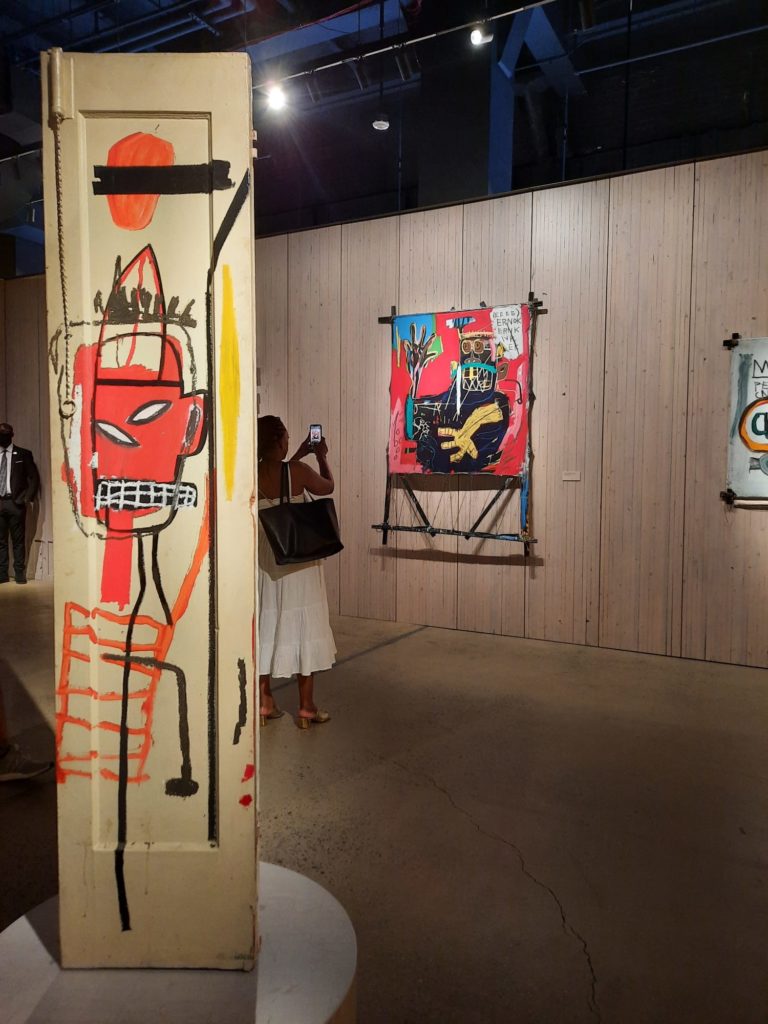
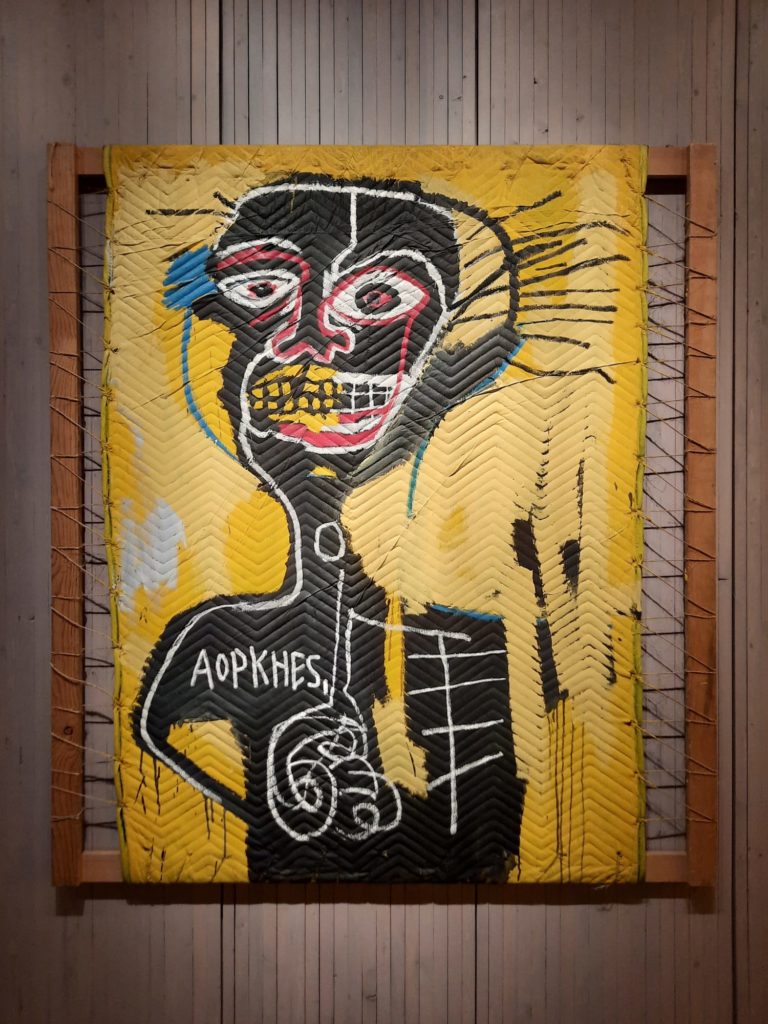
Immersing Yourself In Basquiat
What is the effect of this alternating biographical and exhibition-display style? I found it quite impactful. Having established at the beginning that this is an exhibition about a brother and son, a product of his family and of New York, these recreated moments bring you back to that narrative. For the auditorily-inspired (is that a word?), there are even Spotify playlists to help you stay in the moment; made up of music chosen by his sisters based on his tastes.
And the art and objects on display run the full gamut. There are some of the big paintings that would no doubt command prices above 100 million at auction. There are also small-scale drawings, full of humour or a laboratory for developing ideas. There’s also a selection of Basquiat’s possessions, from African souvenirs to something as mundane as his bicycle. It’s like he’s just popped away for a second and will be back any moment to explain his latest work to us.
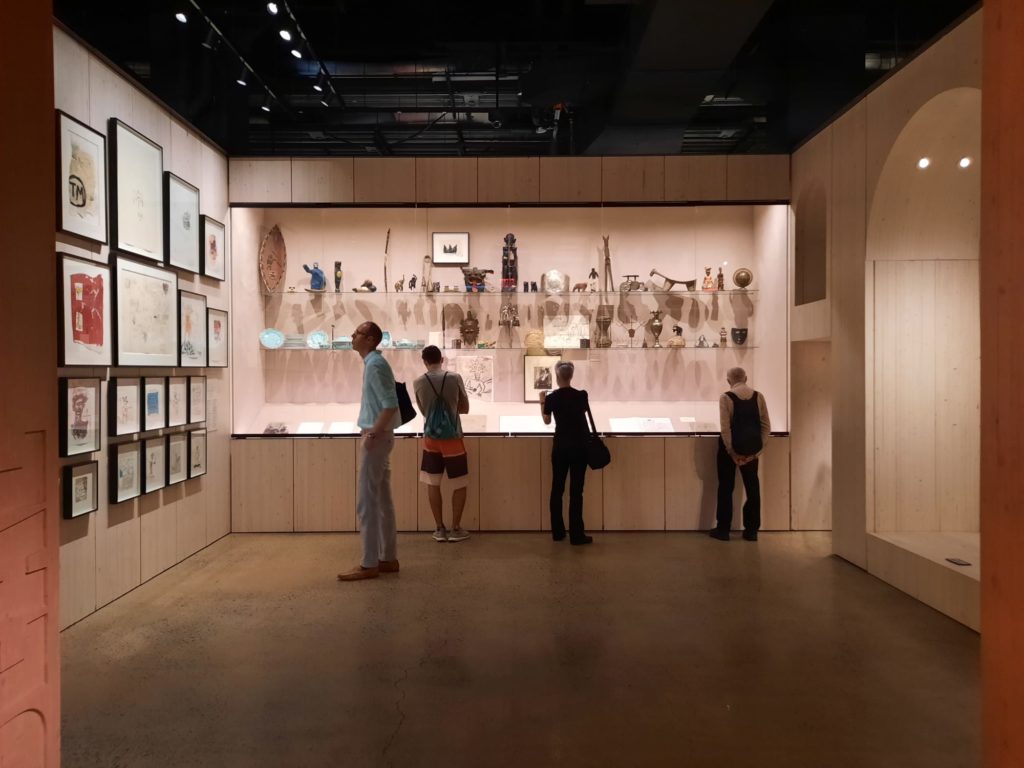
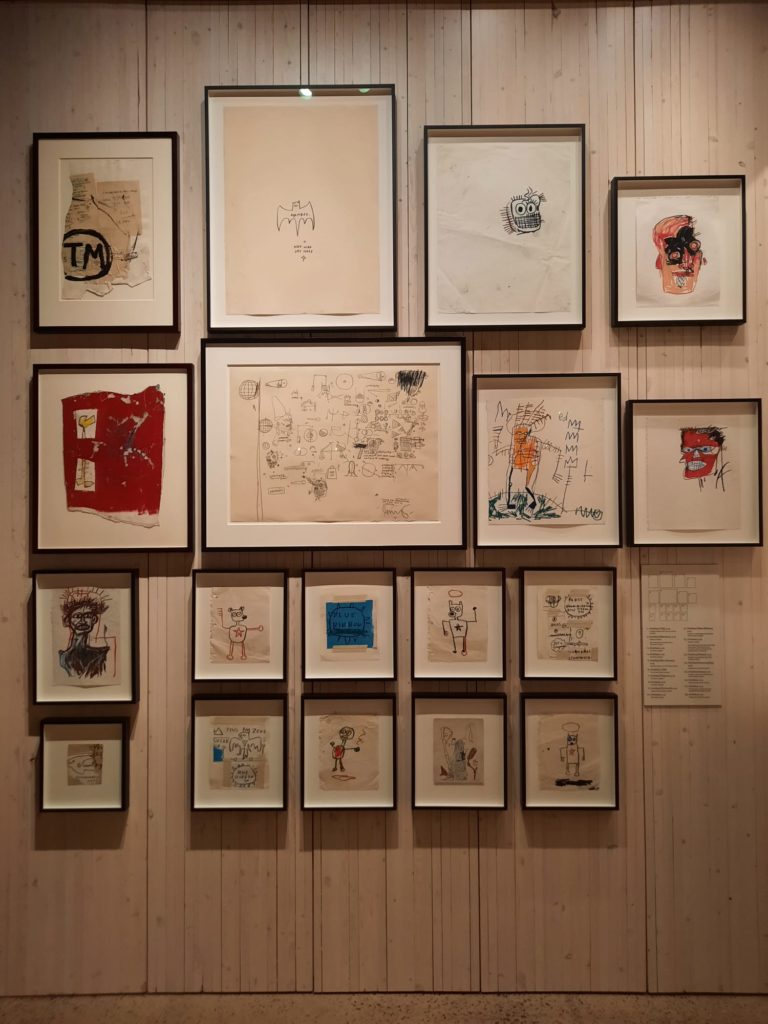
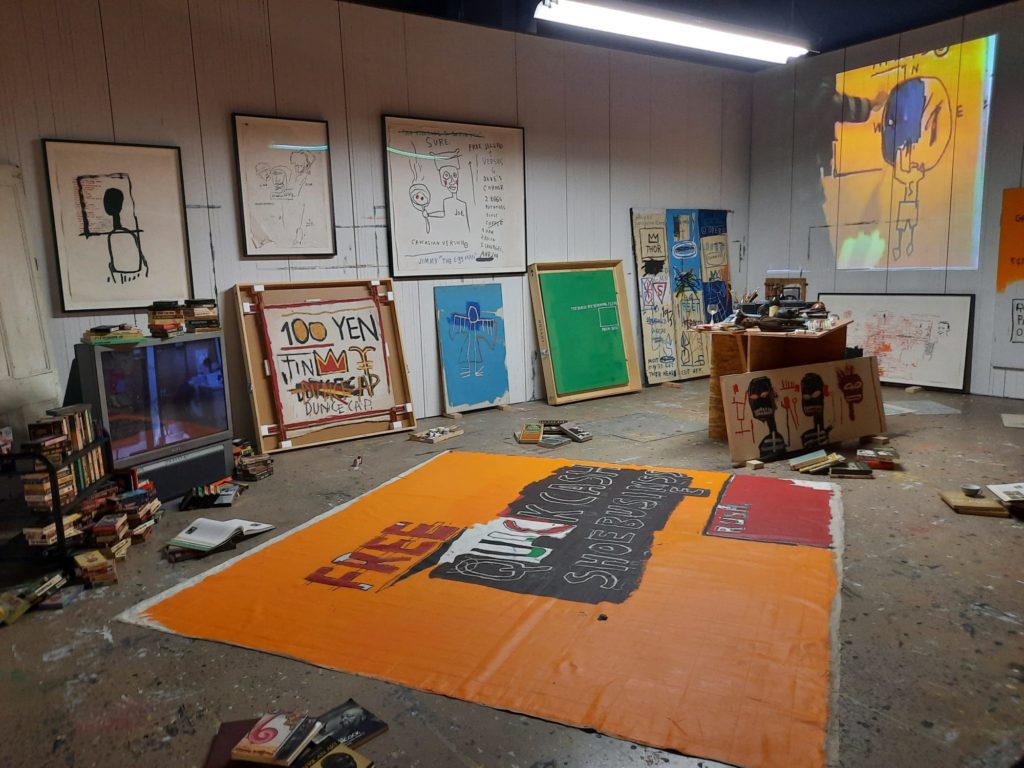
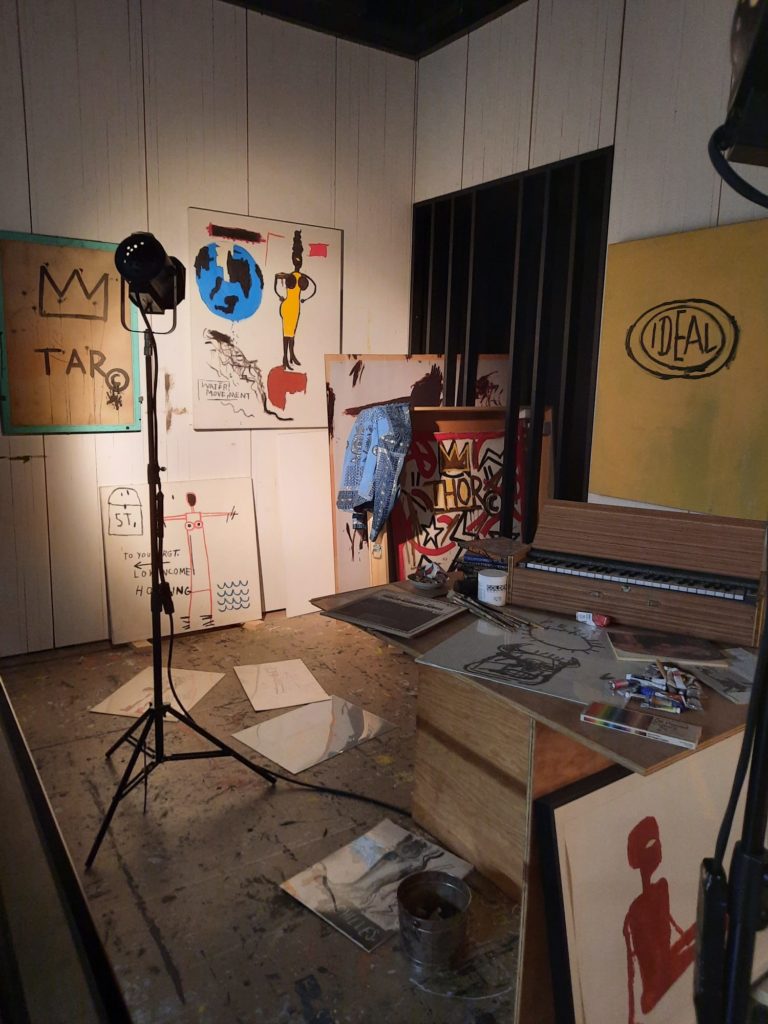
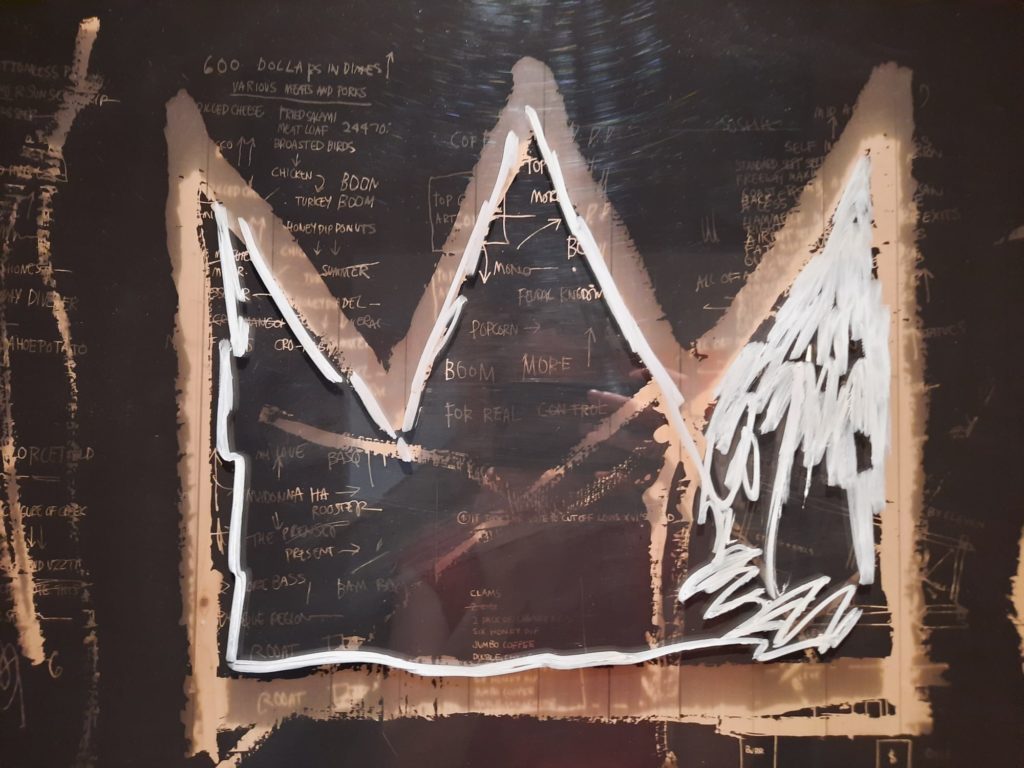
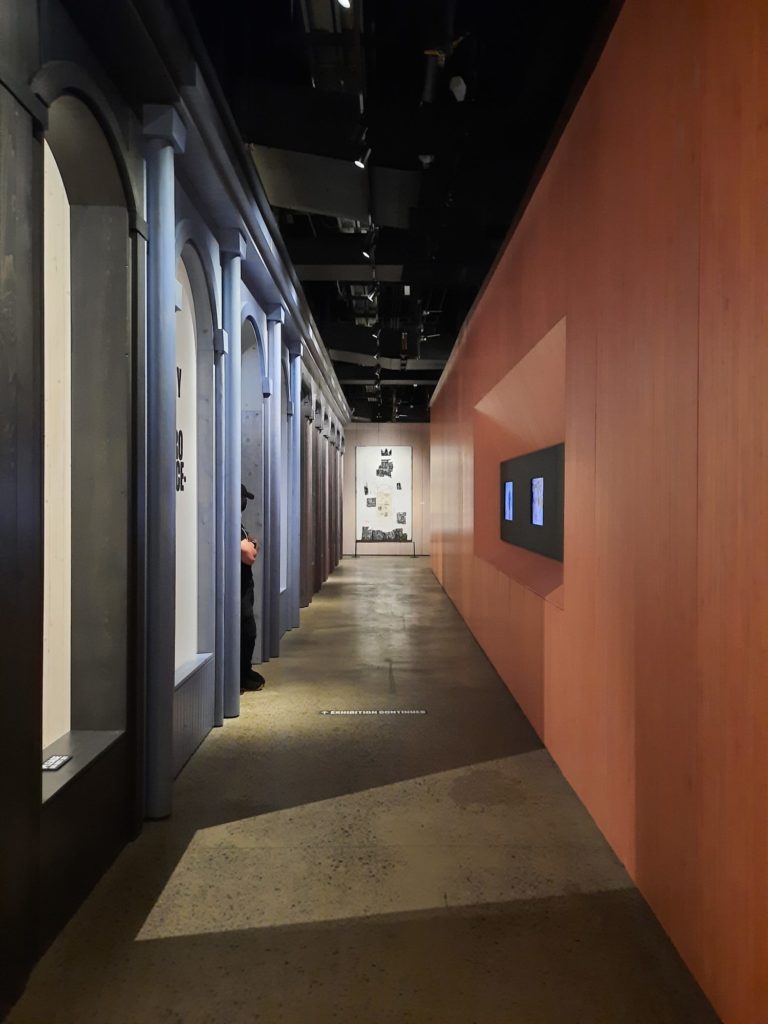
Basquiat By Those Who Knew Him
Towards the end of the exhibition, a section that I really liked involved a series of short videos by those who knew Basquiat. It includes an art advisor friend, gallerist, and family members. They tell anecdotes that capture the essence of Jean-Michel Basquiat as they knew him. His ambition and desire to be recognised as a serious artist. His erudite and many-layered references from art history and further afield. And his relationship with his father, the businessman who wanted Jean-Michel to have a stable career and yet was very proud of his son.
It’s a good set up for the last couple of rooms of paintings, which display Basquiat at his most political and serious. Not that he wasn’t political right from his SAMO graffiti days. But now we explore his head on exposure of racial injustices and similarly weighty topics. The idea is to understand the man through his art. As one information panel says: “People often ask members of our family to opine on what Jean-Michel may have thought about certain topics, but one only needs to go to his work – he speaks quite clearly and loudly for himself.”
And that quote, for me, summarises the vibe of the exhibition. An attempt by a loving family to ensure that their most famous member is still relevant, still seen. Seen as a fully-rounded individual, not just a tragic cautionary tale about fame and fortune. Whether this is successful you can judge for yourself if you come to Jean Michel Basquiat: King Pleasure. I rather thought it was.
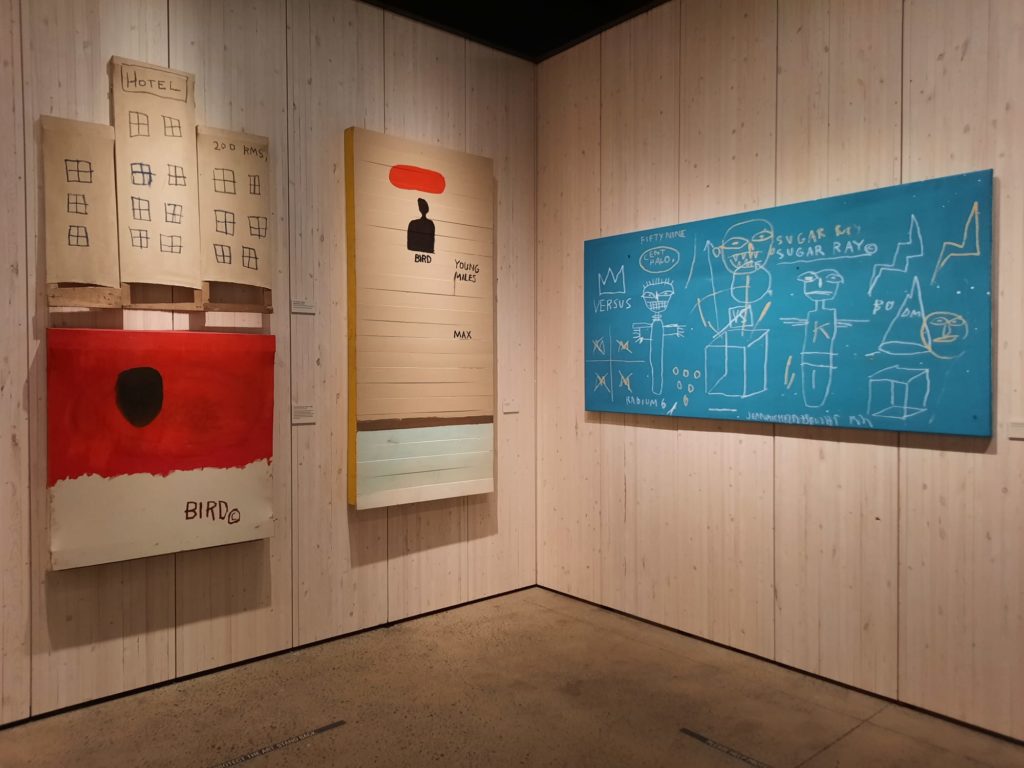
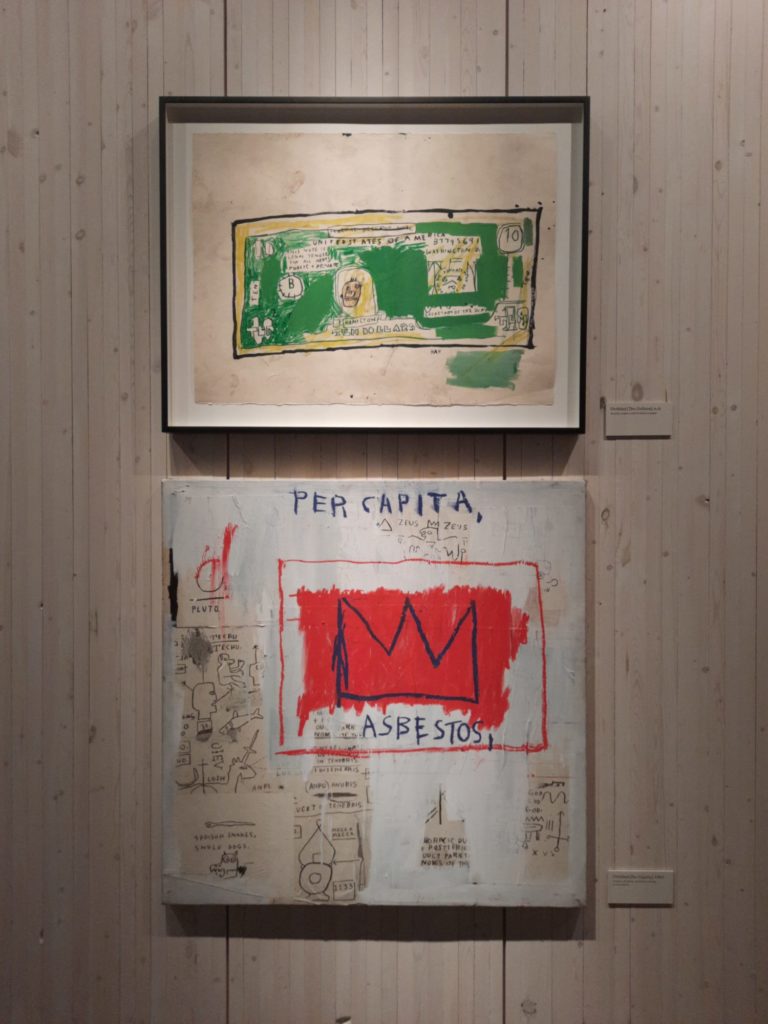
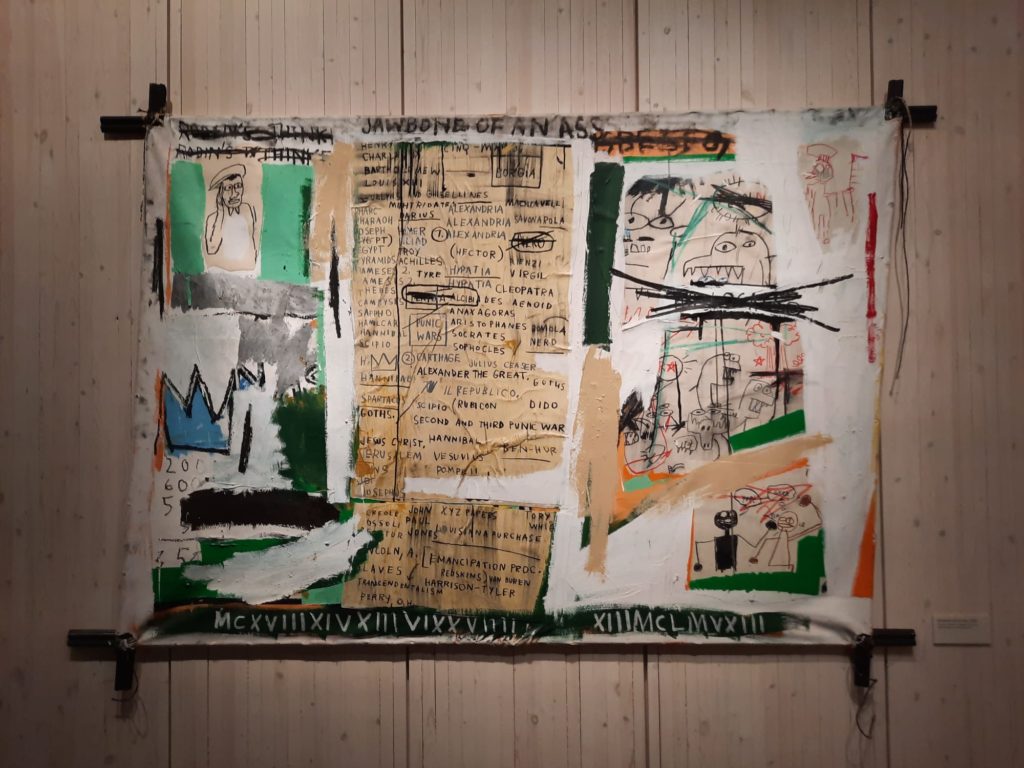
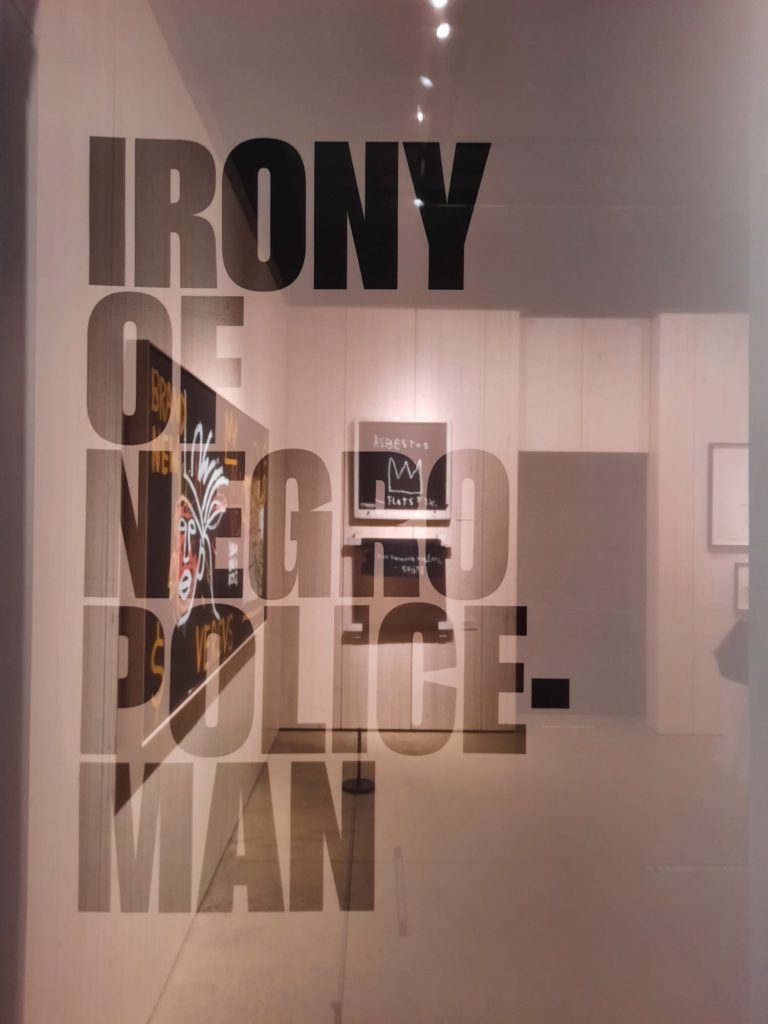
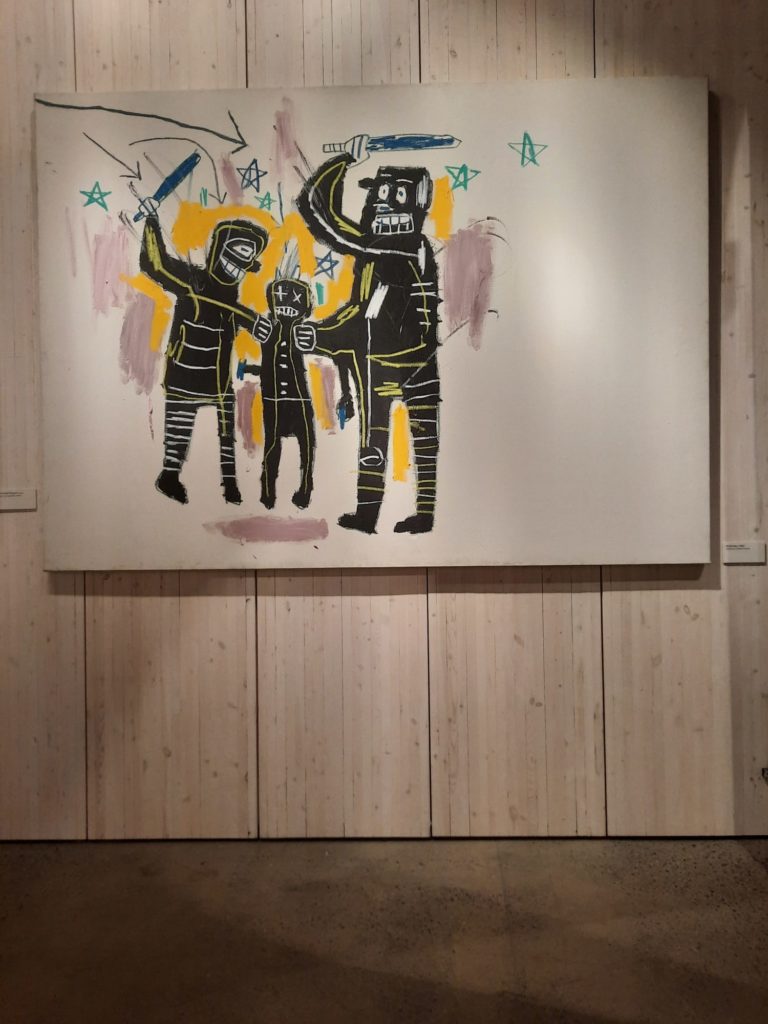
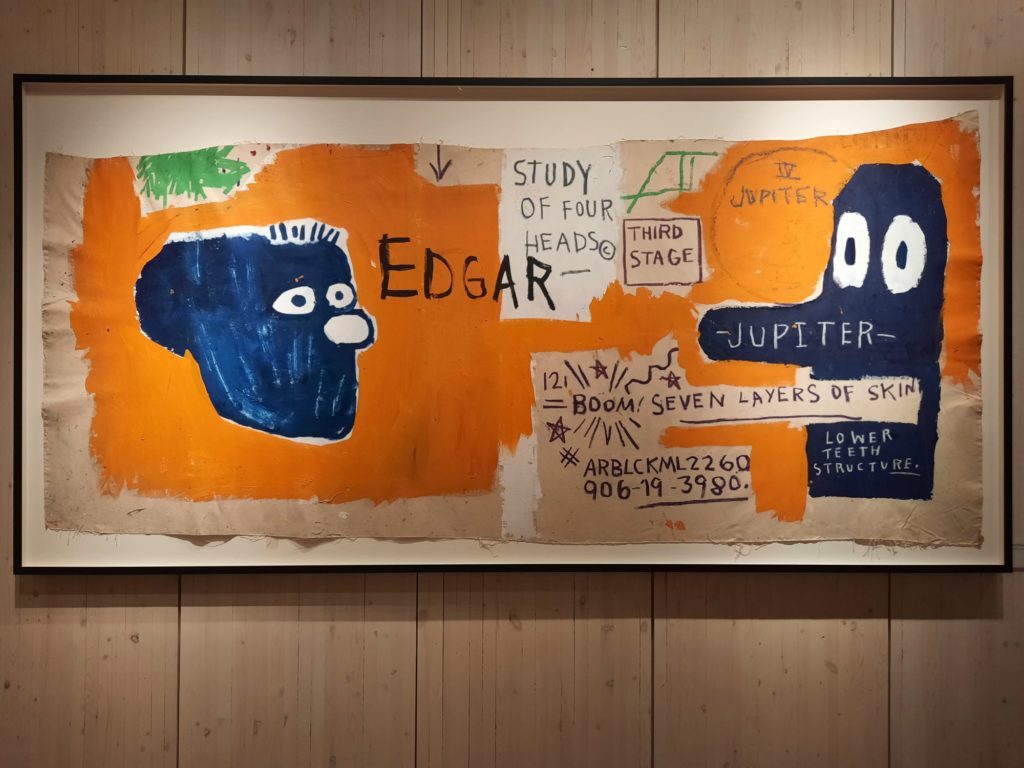
Any Negatives?
I can’t get through a review this detailed and not mention the main downside of Jean-Michel Basquiat: King Pleasure. For me this was the price. A standard entry is upwards of $40. And there’s a Skip the Line option which is above $60. Only there may not be a line at all – there wasn’t when we visited.
To a certain extent I get it. Mounting an exhibition isn’t cheap. And this isn’t even in an existing museum: architect Sir David Adjaye has designed a 15,000 foot exhibition space from scratch. That isn’t without a hefty price tag. But passing so much of the cost on to visitors ensures that it’s only the artistic elite (or the tourists like myself) who will shell out. What about the next generation of Basquiats with their Junior Memberships to the local museum? Should they sit this one out?
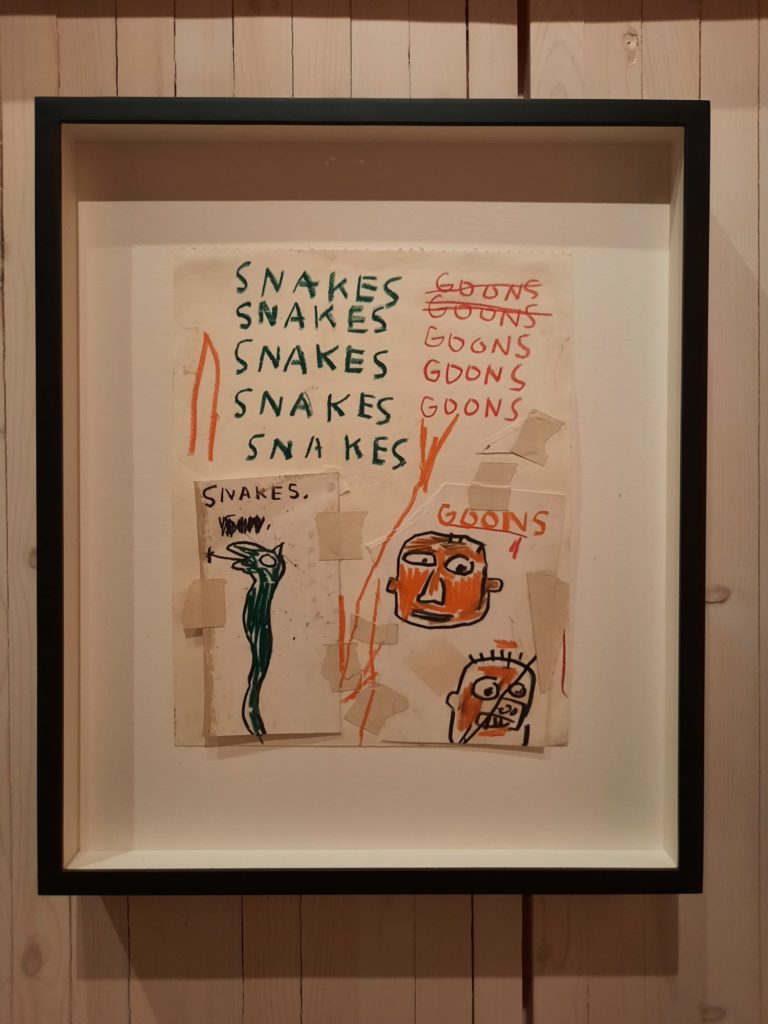
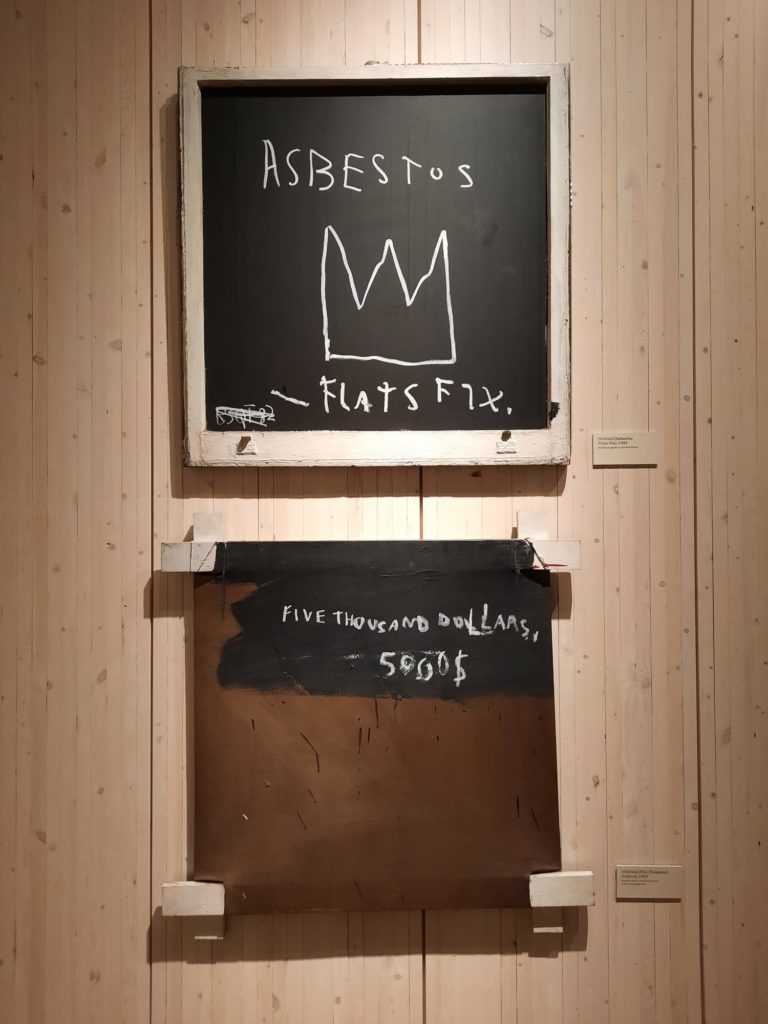
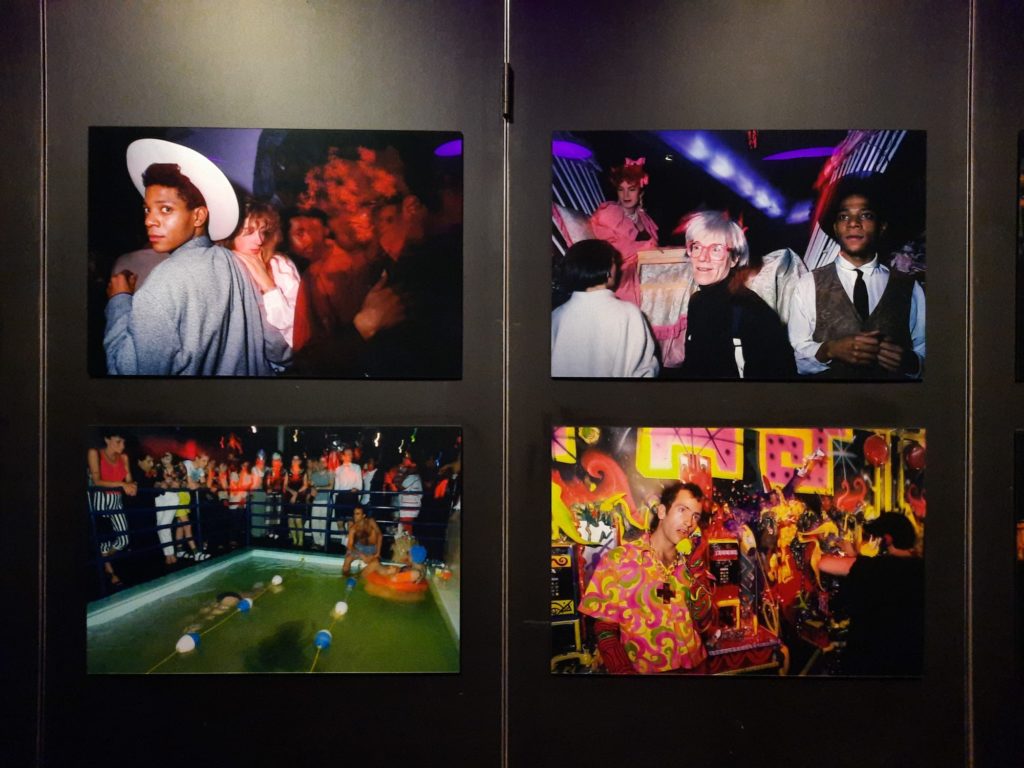
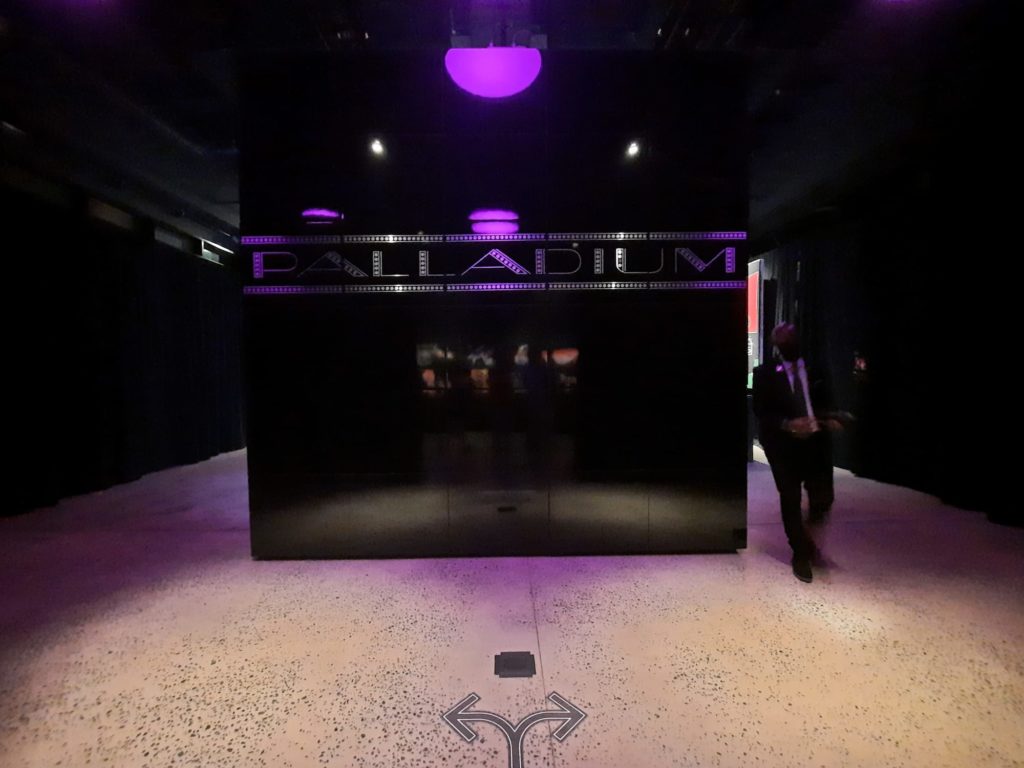
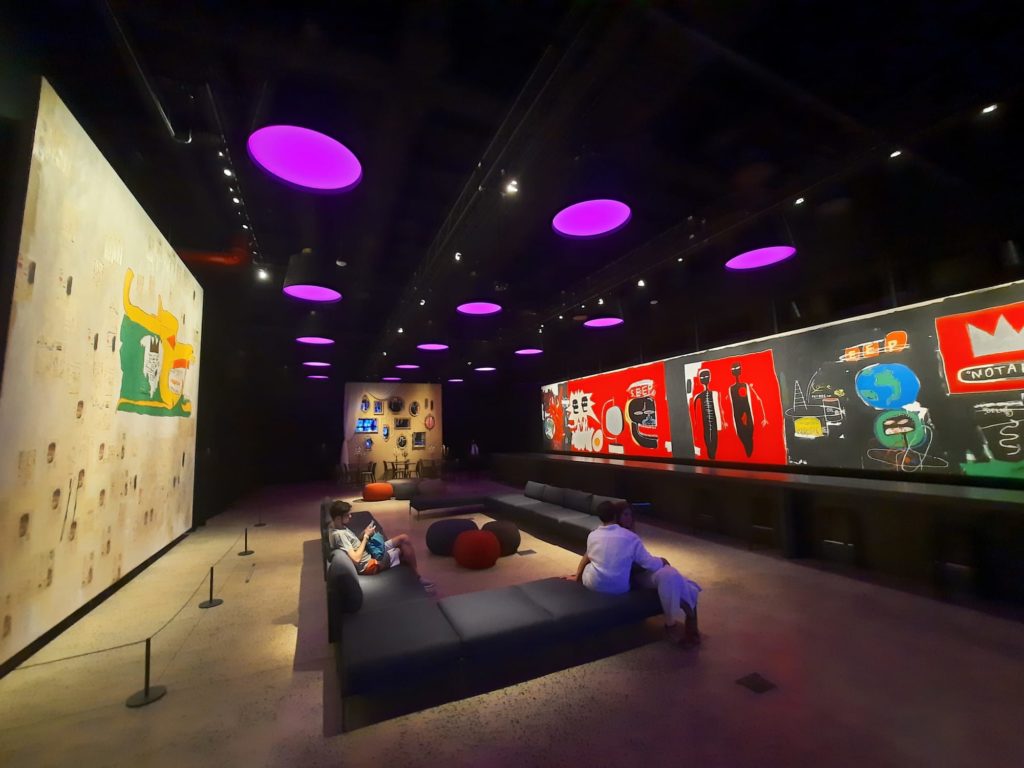
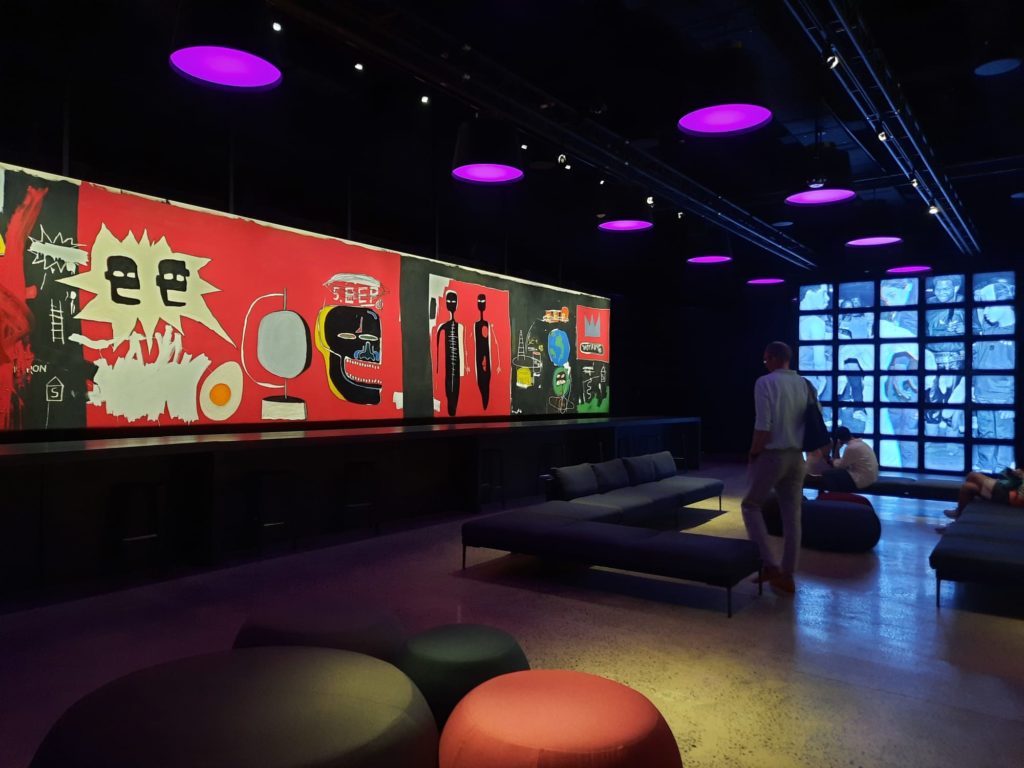
Final Thoughts
If I take the price out of it, I think this is a great exhibition. Rarely seen paintings, displayed thoughtfully. Immersive spaces to reconnect Basquiat with his art. And clever details like playlists and interviews to keep up the energy and momentum throughout the exhibition space.
It’s hard for me to be totally objective, of course, because I’m a big Basquiat fan. And at the end of the day I can’t take price out of it entirely. So I mainly recommend this to other fans. Possibly also to museum geeks interested in seeing a large-scale exhibition outside of the museum framework.
And a final tip – try visiting on a Thursday. It’s not what it was pre-Covid, but this is still opening night for Chelsea’s galleries, so it’s a great way to continue the artistic element to your evening once you leave the Starrett-Lehigh Building. If you can’t manage a Thursday evening, take a walk on the High Line before or after. A perfect place for talking about art, the universe, and everything.
Salterton Arts Review’s rating: 4/5
Jean-Michel Basquiat: King Pleasure currently booking until 31 October 2022
Trendin
If you see this after your page is loaded completely, leafletJS files are missing.

